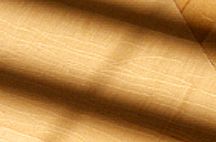Translating British Finishing Terms
What the heck does this British book mean by "white spirits" and "distemper"? Glad you asked, old chap. January 27, 2007
Question
I am in the midst of some refinishing work, and pulled a book off the shelf to look up some solutions to white marks and rings, etc. Unfortunately, it is written in British, and while it tells me exactly how to fix the problem I'm looking at, I can't understand the British chemical/technical terms.
Can any European readers translate the following terms:
-- white spirit
-- methylated spirit
-- meths (I assume the same as above, but that has a whole different meaning in California)
-- terebene
-- polish
-- distemper
I am sure there are others, if anybody else would like to chime in. Thanks for any help with this mysterious language.
Forum Responses
(Finishing Forum)
From contributor J:
-- white spirit = mineral spirits
-- methylated spirit = denatured alcohol
-- meths = methyl alcohol
-- terebene = usually spelled terebine, it's a British version of our "Japan Drier" or a liquid drier made from linseed oil, turpentine and metallic driers.
-- polish = liquid shellac. In fact, finishers in Britain are referred to as "polishers"
-- distemper = finishes or products made with animal hide glue as the binder
From the original questioner:
Many thanks for the translations. I've found British sources are great for traditional techniques and repairs, but I've also given away a book on upholstery and one on faux finishing for this very same language problem.
I had not heard of terebine… and I notice most of the references are to *raw* linseed oil. Is the practice to use the raw and then add your own drier into the mixture... for more control?
From contributor J:
I would substitute Japan Drier for terebene. It's not productive for a finisher to mix up their own and experiment with the ratios.
From contributor J:
Oops - I should have answered your question. Raw linseed oil is used in the British mix because it contains no metallic driers. Our Japan drier contains only the chemical driers (cobalt, manganese and zinc) and solvent as far as I'm aware. For a good book of definitions used in the US and British coatings industry, you can't beat the Coatings Encyclopedic Dictionary. It's pricey but worth it.
